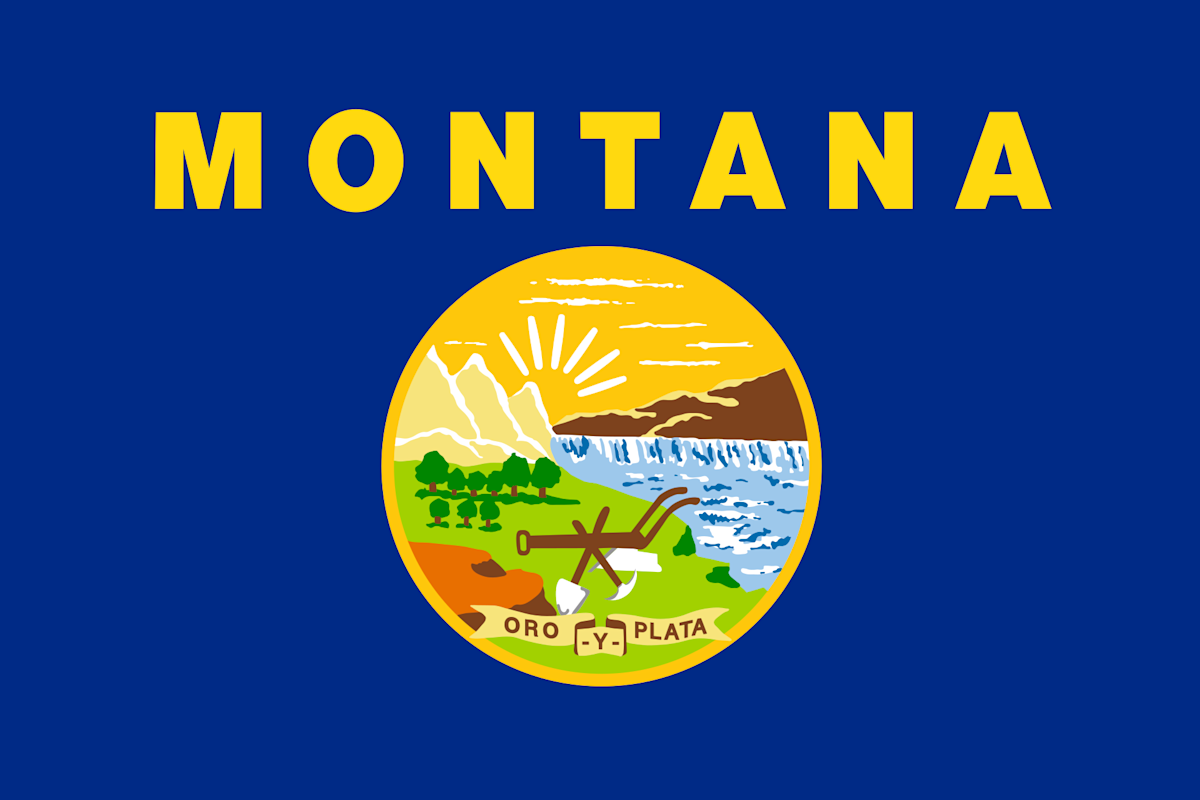Montana Medical Malpractice Laws

Montana is one of the states with the fewest medical malpractice cases filed in 2023, ranking 40th among 50 states, with a reported count of 212. If we look at earlier data, such as the 2021 report, it can be seen that Montana only had 46 cases with an average payout of $510,000 per case.
The low number of cases may be a testament to how reliable healthcare services in Montana can be. In fact, the Treasure State ranked number one for the best state to practice medicine in a report made by WalletHub.
This ranking was decided based on the status of Montana’s job medical environment. Reports also show that the state has increasing job opportunities, which involves adding 1,330 new jobs each year through 2030.
While these values serve as a basis for how reliable Montana’s healthcare system is, we still cannot disregard the fact that accidents can happen and medical providers can make mistakes. These give rise to the issue of medical malpractice lawsuits in Montana.
This article delves into the medical malpractice laws in Montana, such as determining the fault, the statute of limitations, damage caps, and the overall litigation process.
What Qualifies as Medical Malpractice in Montana?
When a patient in Montana suffers harm due to the negligence of their healthcare provider, whether it is a nurse, doctor, or any medical professional, the act is considered medical malpractice.
It is important to note that medical negligence is a term you cannot generally use to file a lawsuit against your provider since this action is only the cause of the case, not the result. In Montana, patients need to prove that their injuries were indeed a result of the careless action of a medical provider.
Types of Medical Malpractice Cases in Montana
Due to a healthcare provider’s negligence, there can be several ways a patient can suffer injuries under their care, depending on which procedure is being done or the kind of treatment they are receiving. The most common medical errors are:
Surgical Errors
Anesthesia Errors
Prescription Medication Errors
Delayed Diagnosis, Misdiagnosis, or Failure to Diagnose
Failure to Inform
Birth Injuries
Brain Injuries
Spinal Cord Injury
Wrongful Death
Hospital negligence through inadequate staffing, procedures, and policies
Who Can You Sue for Medical Malpractice in Montana?
The healthcare provider responsible for the injuries you sustained while receiving treatment will be the one liable for the lawsuit. These providers are not limited to doctors or hospitals but can extend to any medical practice in the state.
These may include professionals, such as nurses, dentists, physicians, and surgeons, or facilities, such as nursing homes, pharmaceutical companies, and medical device manufacturers.
Exemptions
While it is mentioned in the context above that any medical provider can be held liable for the plaintiff’s injuries, certain exemptions apply to this legal responsibility, whether it is the person involved or the amount of damage payable.
Good Samaritan law
Enacted in 1963, Montana’s Good Samaritan Law was created to protect individuals providing emergency medical assistance without accepting payment in return. These people will not be held liable for any injury or harm that the patient might have suffered while receiving treatment from them.
Their liability will only be present if their actions were intentionally harmful, careless, or negligent.
Medical Malpractice Liability Insurance Requirements
It is not required for healthcare providers in Montana to carry medical malpractice liability insurance. However, even if this is a known fact among medical professionals and facilities, there are still requirements that individual healthcare employers impose on their employees.
Some healthcare facilities in Montana require their providers to carry medical malpractice liability insurance in case they face lawsuits from patients. Moreover, it is also common for health insurance underwriters to mandate policyholders to add liability insurance as coverage to their existing plans.
What Is the Statute of Limitations in Montana for Medical Malpractice Cases?
In Montana, victims of medical malpractice cases have two years to file a case against their healthcare provider from the date of the injury or when it was discovered. In Montana, plaintiffs are legally prohibited from filing a case more than five years after learning about the injury.
However, if the medical provider intentionally concealed the injury from the patient, the statute of limitation will be extended to allow the plaintiff time to prepare for the case. The deadline is two years from the date that the plaintiff discovered the injury.
What Do You Need to Prove in a Montana Medical Malpractice Case?
To file a medical malpractice lawsuit against a healthcare provider in Montana, the plaintiff has the burden to first prove the validity of their case. To do this, they must establish the basic elements of a medical malpractice claim, which are:
Existence of a doctor/patient relationship, the patient is owed a standard duty of care;
The doctor failed to provide or breached their duty of care;
The said duty of care caused harm to the patient;
The patient’s injuries led to damages.
The Montana Medical Legal Panel, which was mentioned in the section above, will play an important factor in proving the case. As discussed previously, the MMLP will be the one to review the plaintiff’s case and determine if the claim is strong and whether they should proceed with a court filing.
There will be no fees applied during the process, and both parties will attend the hearing with or without counsel representation.
The panel will be composed of six members designated to review the claim, which can be three healthcare providers and three attorneys. The selected healthcare provider for this panel should be practicing the same specialization as the defendant in the case.
During this procedure, the panel will determine whether there is substantial evidence that the healthcare provider's actions were negligent and led to medical malpractice. The panel will also assess if there is a reasonable medical probability that the patient’s injury happened due to the provider’s negligence.
Having the panel review your case is one of the most important steps, since you cannot file a medical malpractice lawsuit in Montana without a panel hearing.
Exceptions
While it is discussed that undergoing the panel review is necessary for a medical malpractice lawsuit in Montana to proceed to court, there are certain exceptions that apply to specific situations.
These exceptions include claims subject to arbitration agreements allowed by the law. Claims submitted by inmates in correctional facilities are also exempt from the panel review since the government is not liable for any injuries or damages caused by their employees to individuals in these facilities.
Apology Law in Montana
Montana has a law regarding statements of apologies, benevolence, or sympathy that are shown by the healthcare provider to the injured patient. According to this law, these actions by the provider cannot be used as evidence against them for admitting fault for their negligence.
How Much Can You Sue For Medical Malpractice in Montana?
Compensation is one of the most common reasons why people file a medical malpractice lawsuit in Montana in the first place. They want the negligent party to be held accountable for their negligence and recover damages and losses for their injuries.
Types of Damages
The damages that plaintiffs can recover are typically divided into two categories: economic and non-economic.
Economic damages are meant to reimburse you for the out-of-pocket expenses you covered due to your injuries. These include medical bills, rehabilitation and nursing costs, prescriptions, lost wages, and physical therapy.
To make sure that you are receiving the compensation amount you are entitled to, you can hire a medical malpractice or personal injury lawyer in Montana. They can better help you calculate the right amount while educating you about the recovery process.
Meanwhile, non-economic damages are those that are hard to place on a proper value, such as loss of enjoyment of life, future medical expenses, physical pain, and emotional and psychological distress.
Damage Caps
Since non-economic losses are difficult to value, it may become complicated when it comes to calculating these types of losses, and plaintiffs might assume that they can take as much compensation as they want.
To prevent any misunderstanding during the compensation calculation process, certain rules limit the amount of money the plaintiff can receive.
The current damage cap that the state has is $250,000. This is the amount that each medical malpractice victim can receive, regardless of whether there are one or numerous healthcare providers involved in a case.
If the plaintiff seeks to receive more than the statutory limit, they will be required to show separate records of injuries resulting from the medical provider’s negligence.
There are also damage caps to how much a plaintiff can receive for suing government bodies for medical malpractice. For each case filed against a government employee or body, there is a $750,000 compensation limit. This does not mean that if a plaintiff has more than one lawsuit, they can sue the government for an incredible amount.
To prevent this, the state placed a general limitation for government-targeted claims to $1.5 million total for all cases filed by a single plaintiff.
Punitive Damages
Plaintiffs can also recover punitive damages if the defendant of their case, the medical provider, is found guilty of intentional wrongdoing like actual malice or fraud.
In this situation, actual fraud applies when the healthcare provider hides information about the treatment from their patient or makes false statements about it. Actual malice, on the other hand, occurs when the provider has identified that the patient might be harmed but purposely ignores that fact.
The decision to award punitive damages will be made by the jury or judge, and a separate proceeding will be conducted to determine the amount of compensation the plaintiff is supposed to receive.
Factors considered when calculating punitive damage awards include the defendant’s intent, the severity and nature of the defendant’s wrongdoing, and the extent of the plaintiff’s injuries.
There are also limits to how much the plaintiff can receive in punitive damages. In Montana, the damage cap for punitive damages is $10 million or equivalent to 3% of the defendant’s net worth, whichever is less.
Negligence System
Montana follows the doctrine of modified comparative fault, where if the plaintiff is partly liable for the injuries they sustained, they will only receive a percentage of the compensation award.
The percentage of fault will also determine if the plaintiff can recover compensation. For instance, you were 50% liable for the damages resulting from your injury. You will only be given 50% of the monetary compensation in this situation.
However, if you are found 51% responsible for the injury, you are barred from recovering any compensation.
Methods of Obtaining Compensation
Arbitration is a commonly known method to settle medical malpractice lawsuits in Montana. This process is easier and faster, also allowing both parties to communicate with each other and make the final decision about the claim by themselves.
If both parties, however, do not want to resolve the case through any form of alternative dispute resolution procedure, the plaintiff can submit their case for review by the Montana Medical Legal Panel.
Filing the Case
Once the claim is determined to be valid, the plaintiff can proceed to file a complaint with the clerk of the Montana civil court. This complaint will include a demand for relief, the personal details of the parties involved, and a statement of facts proving negligence in the case.
After this, a civil summons will be issued, which will notify both the court and the defendant of the submitted lawsuit. Once the summons has been served, the defendant has 20 days to respond to the complaint.
Litigation Preparation
During this process, both parties will be disclosing information about the case for the trial. There are several ways to disclose the said information, such as through patient examinations, depositions, requests for documents, and written questions.
The doctor’s notes and medical records are also often requested in this process.
Pretrial Litigation
Both parties have the chance to settle the case before it reaches trial. The court typically conducts pre-trial conferences to ensure both parties are ready for the trial and even present opportunities to explore other settlement options.
If both parties persist, the case will be moved to trial.
Trial
This is the lengthiest procedure for any legal case in Montana, including medical malpractice. In this proceeding, plaintiffs will present their case with the help of an expert witness, and the defendants will counter these claims through evidence. This is typically a back-and-forth process until both parties reach closing arguments.
Once both parties have stated their side of the claim, the jury will then deliberate to come up with a final verdict on the case.
Appeal
In the event that the plaintiff or defendant is not satisfied with the court’s decision about the case, they can choose to file an appeal, which must be made within 30 days from the date of the judgment.
How Much Does It Cost to Pursue a Medical Malpractice Case in Montana?
If you decide to file a medical malpractice lawsuit in Montana, you will have to prepare yourself for the fees you will be covering during the process. A lot of these fees are associated with filing the case, hiring an attorney, and gathering evidence.
The first cost is the court fee. The average court filing fee for medical malpractice cases ranges from $100 to $500 in Montana.
It is difficult to determine the exact amount you are going to pay expert witnesses taking part in your case and healthcare facilities for providing a copy of your medical records. The payment for these records will depend on how many pages there are.
Then, there are the attorney fees. While some plaintiffs decide to represent themselves in court, it is undeniable that having legal representation can help you strengthen your case.
Typically, medical malpractice lawyers in Montana work on a contingency fee basis. This means they will only be paid when the case is won, which is 33% to 40% of the award the plaintiff will receive.
Legal Resources for Medical Malpractice Victims in Montana
The resources below will help victims of medical malpractice in Montana have easy access to legal forms, representation, and advice to help their case. These organizations are dedicated to serving people from low-income families and underserved communities.
Montana Legal Services Association
The Montana Legal Services Association aims to protect the civil legal rights of people in the state. Every year, the association helps almost 10,000 individuals have access to justice regarding their legal issues, be it medical malpractice, employment, or family matters. Due to its advocacies, 99% of the residents in the state increased their knowledge of their legal rights and the legal system. MLSA also strives to promote systemic change for Montana residents living in poverty.
Montana Law Help
Montana Law Help is a website maintained by the Montana Legal Services Association. It is dedicated to providing legal forms, information, representation, and advice for a variety of issues. These include medical malpractice, healthcare, immigration, family, and crime issues. Montana Law Help provides its services to people who are considered moderate or low-income.
Alexander Blewett III School of Law - Pro Bono Program
Alexander Blewett III Schoo of Law’s Pro Bono Program aims to provide accessible legal representation for students who belong to low-income or underrepresented families in Montana. Due to its focus on underserved communities in Montana, the program extends its services to various issues, such as providing low-income people access to healthcare resources, addressing medical-related legal issues, and navigating health insurance.
Expertise.com StaffAuthor
Step into the world of Expertise.com, your go-to hub for credible insights. We don't take accuracy lightly around here. Our squad of expert reviewers, each a maestro in their field, has given the green light to every single article you'll find. From rigorous fact-checking to meticulous evaluations of service providers, we've got it all covered. So feel free to dive in and explore. The information you'll uncover has been stamped with the seal of approval by our top-notch experts.




